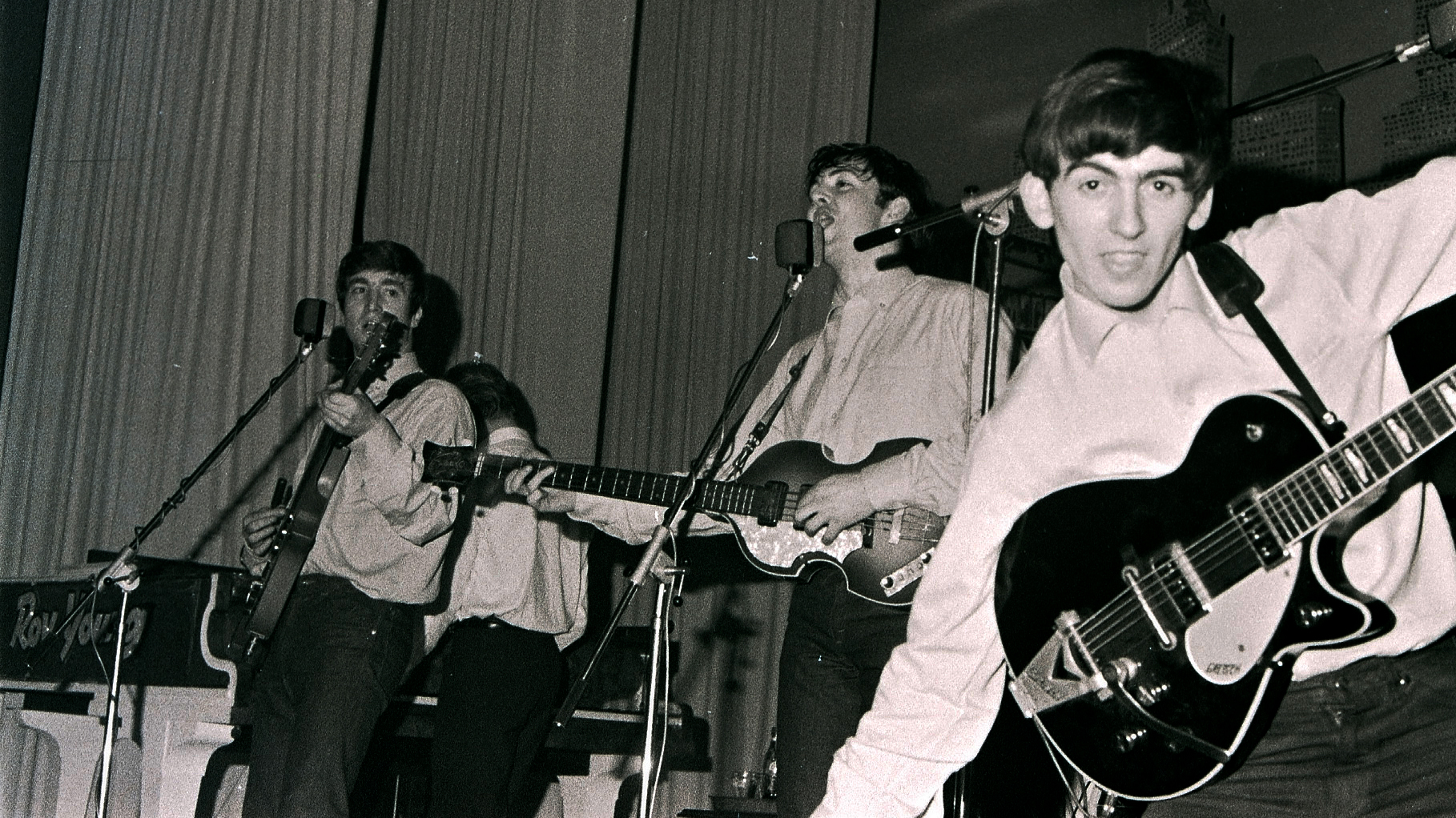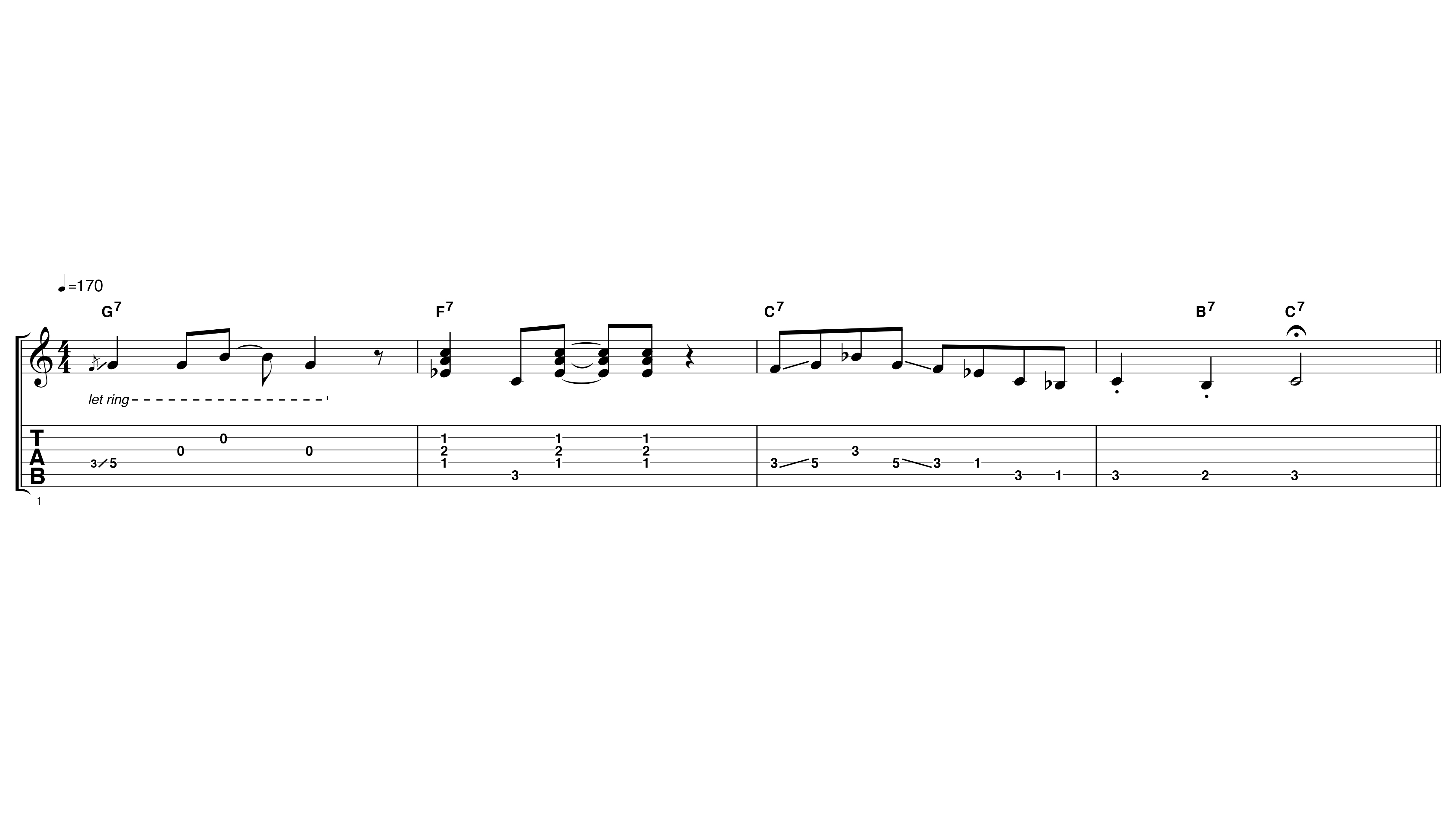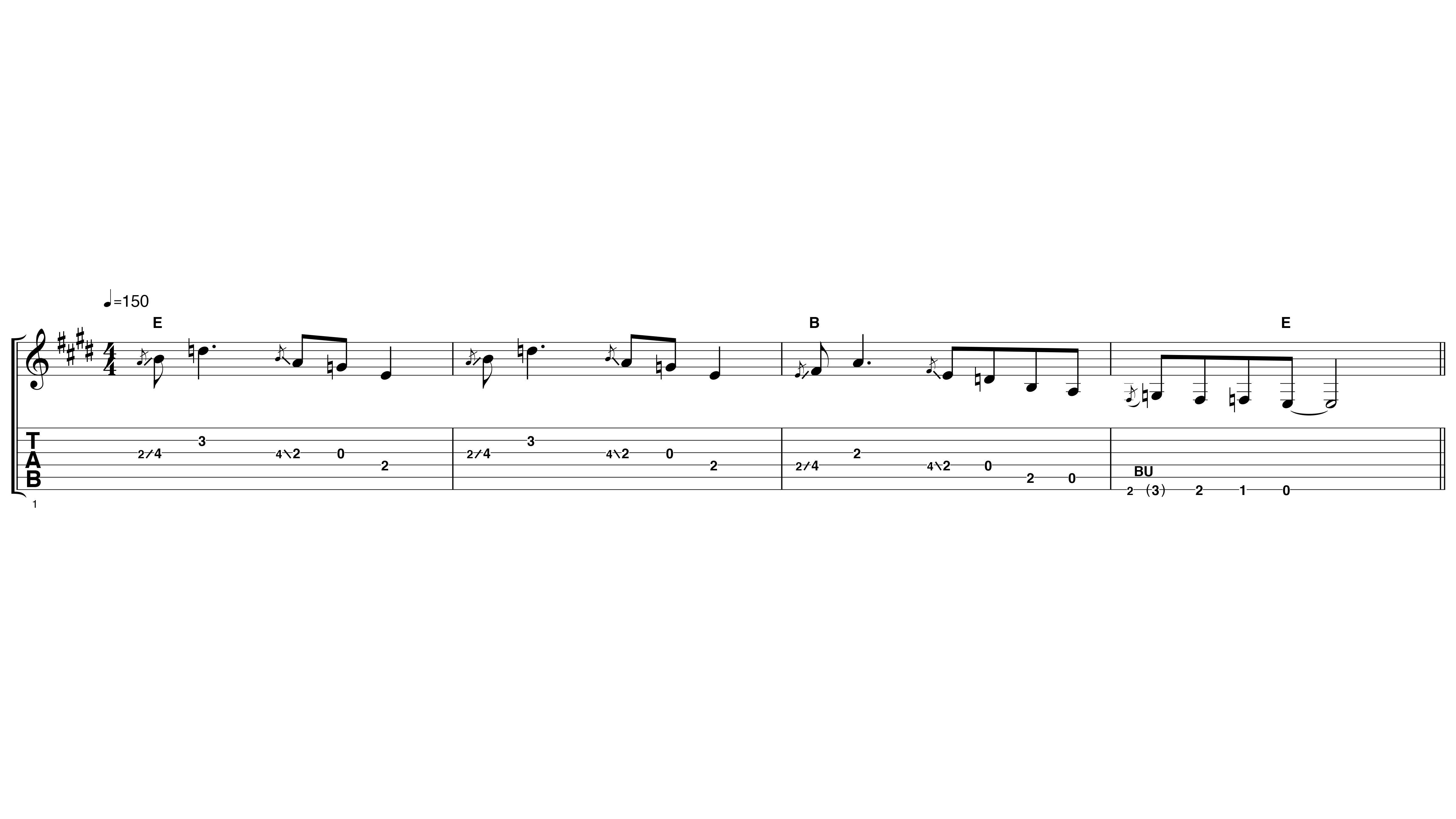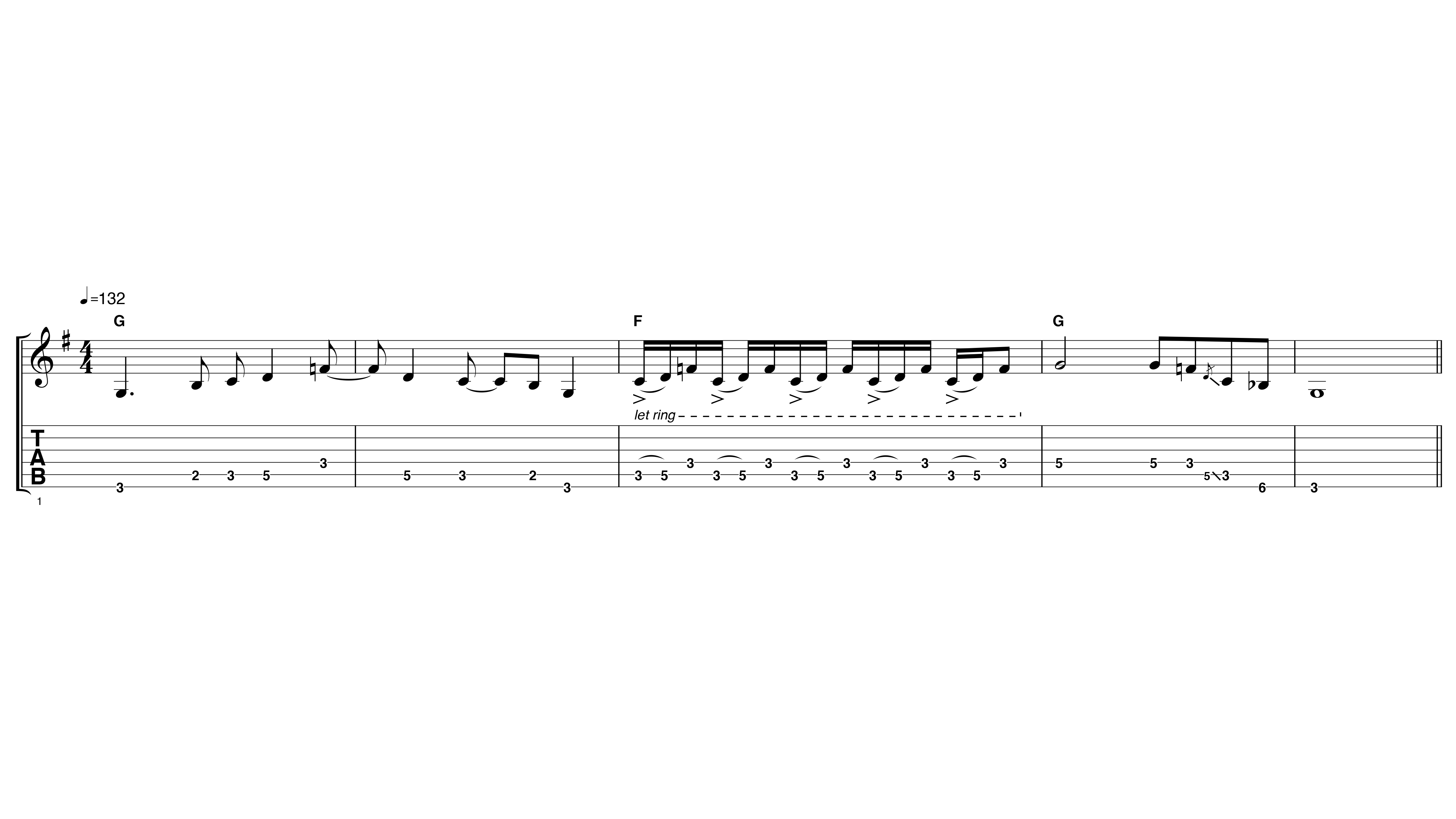
George Harrison was the archetypal lead guitarist. Like all great players, his style was the result of an eclectic mix of influences. Big Bill Broonzy, Django Reinhardt, Slim Whitman, Chet Atkins, Carl Perkins and Lonnie Donegan were all inspiration for the young Harrison.
By listening to a wide range of styles – blues, jazz, country, rockabilly and skiffle – he was able to develop his own individual sound and identity. Learning his craft by copying the playing he heard on records, George demonstrated a fluent soloing style from the start of The Beatles’ career. His role in the band was clearly defined as that of the ‘lead’ guitarist, adding memorable riffs, licks and solos that defined the band’s sound.
1. Outline the changes

This example illustrates George Harrison’s country influences and, in particular, how a mixture of open-string lines, partial chords and single-note lines can all be used to outline a chord progression.
2. Transposing pentatonic ideas

By working out the licks of American blues guitarists, George realised that the minor pentatonic scale could be transposed to ‘fit’ each chord in a 12-bar sequence.
The opening E minor pentatonic lick in this example is transposed down a 4th so that it can be repeated over the B chord in bar 3.
3. Carl Perkins and rockabilly influences

George's rockabilly influences are outlined here in this Carl Perkins-style lick. Use alternate down-up style eighth-note picking throughout for best results, keeping your fretting hand in 2nd position (ie, with your first finger at the 2nd fret).
4. 12-string electric style

George Harrison is well known for using a Rickenbacker 12-string electric guitar. The rich sound of the 12-string guitar allowed him to outline simple melodic ideas without any dropout in the fullness of the sound.







